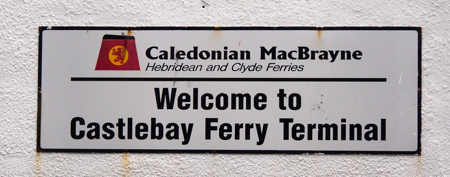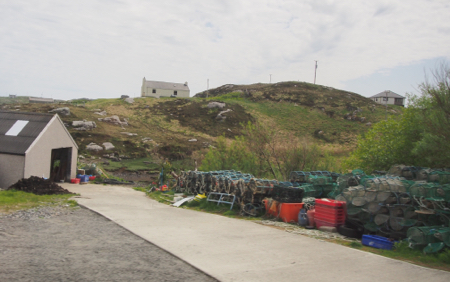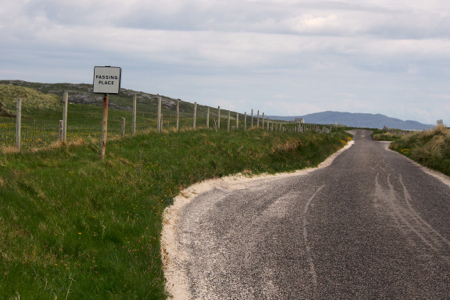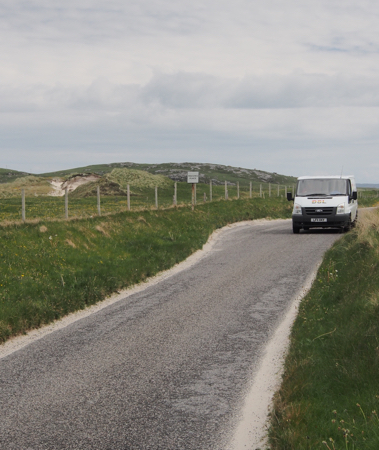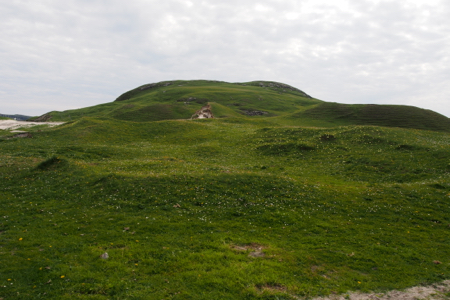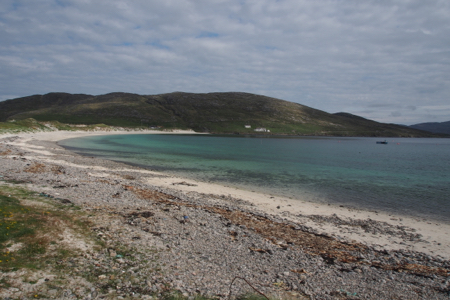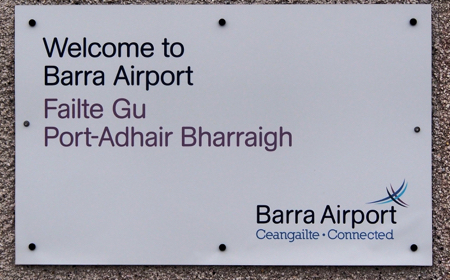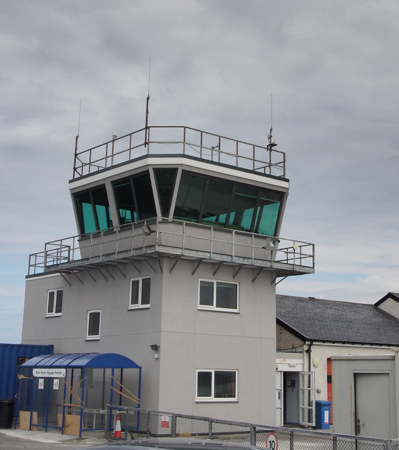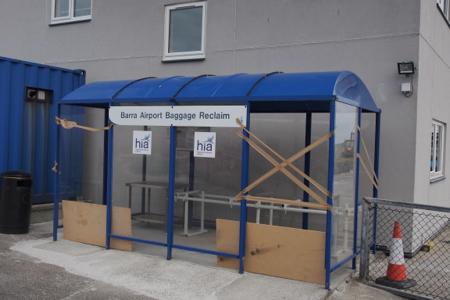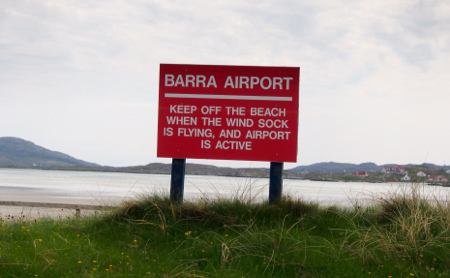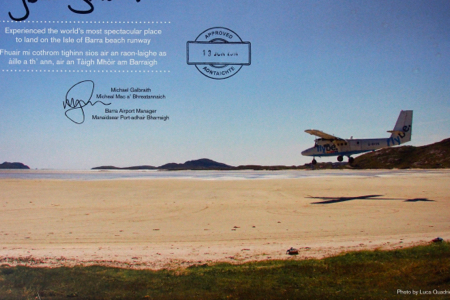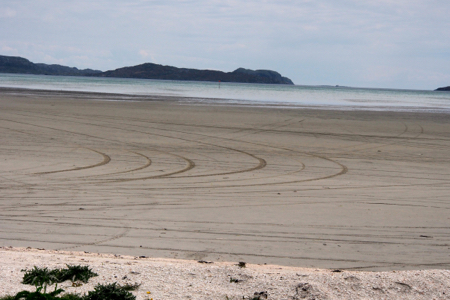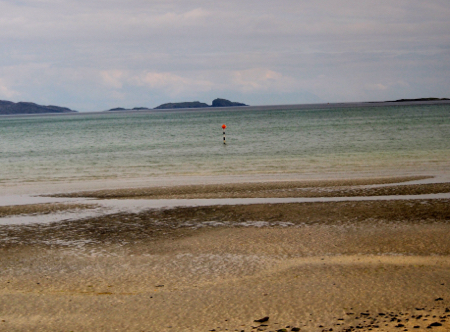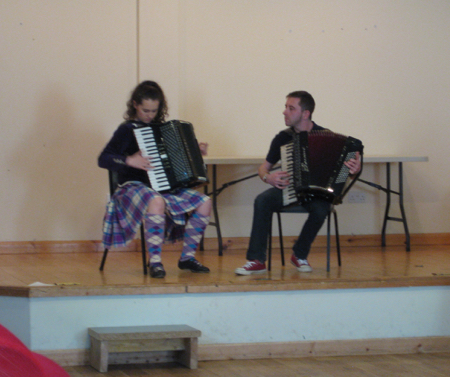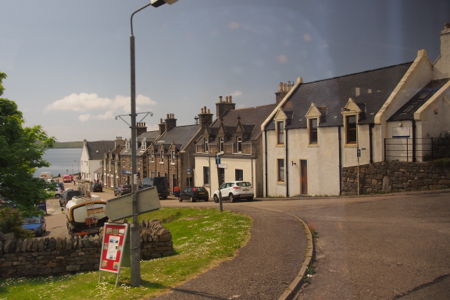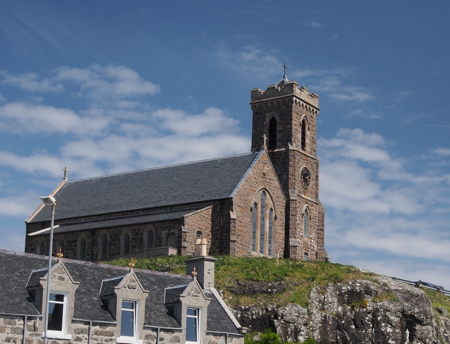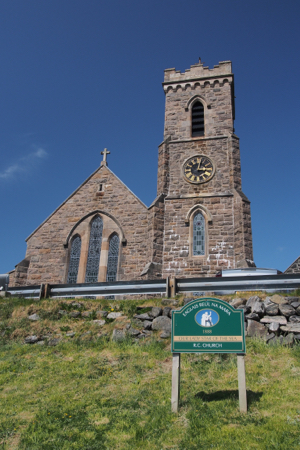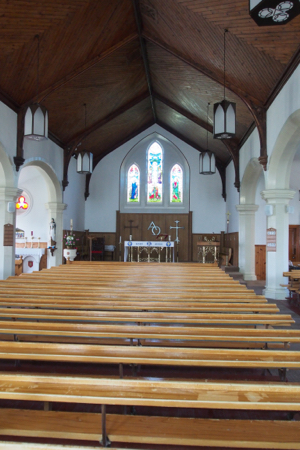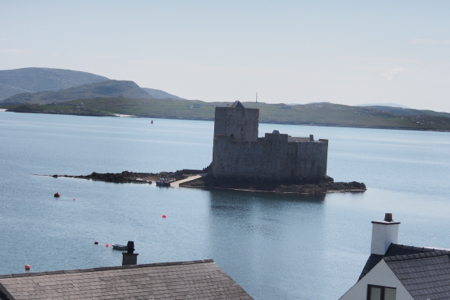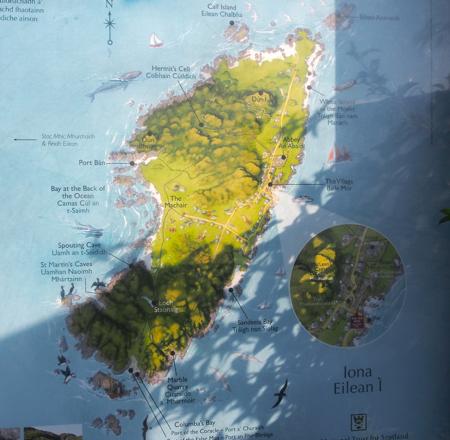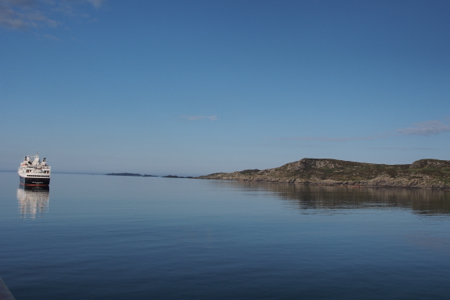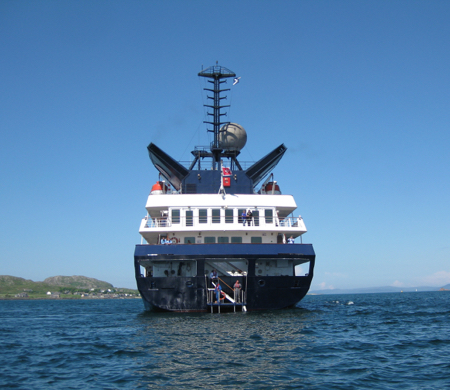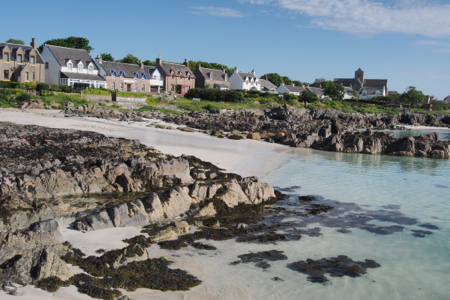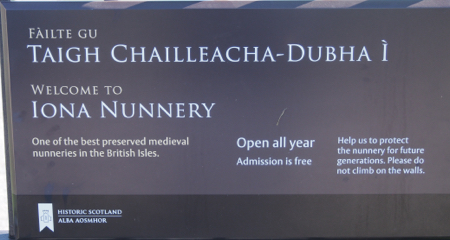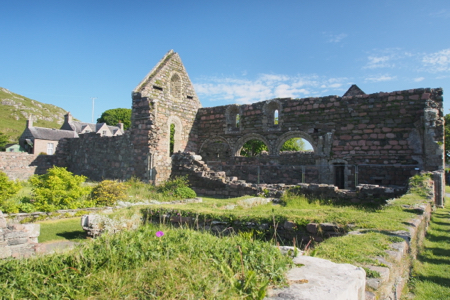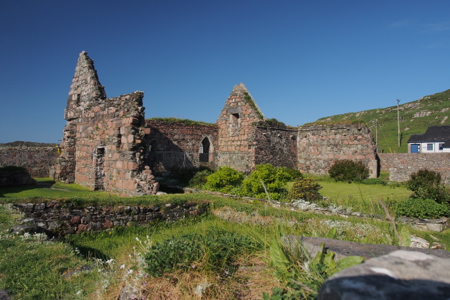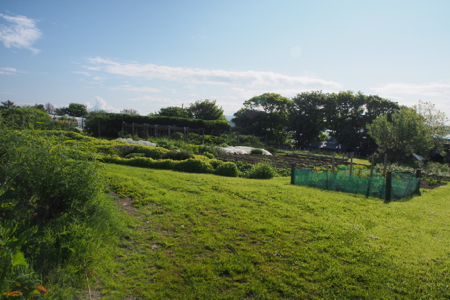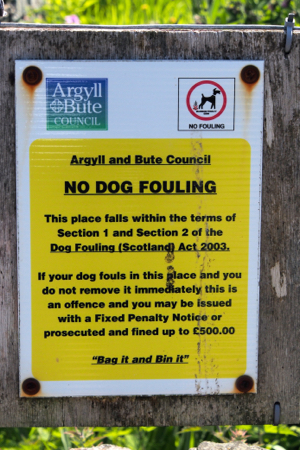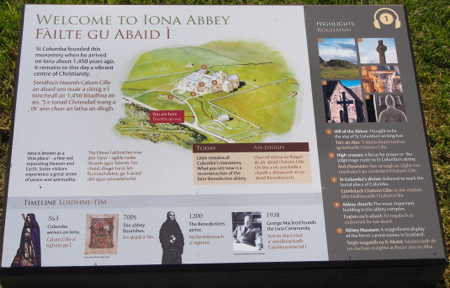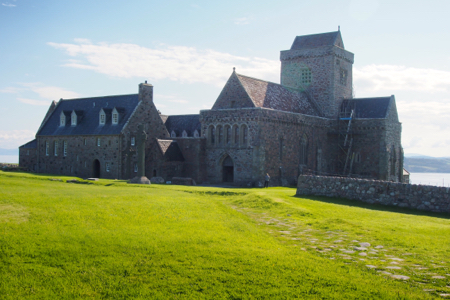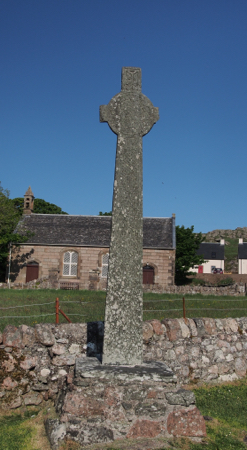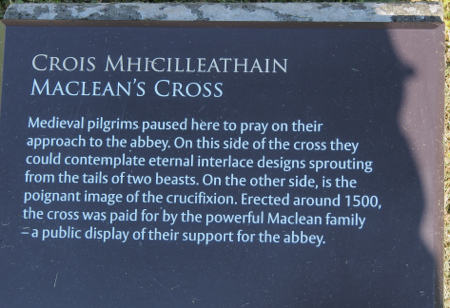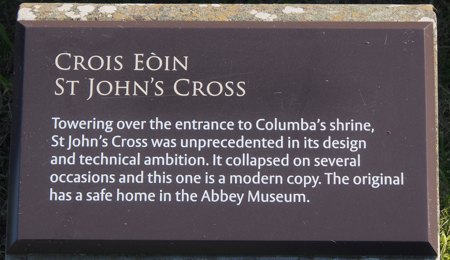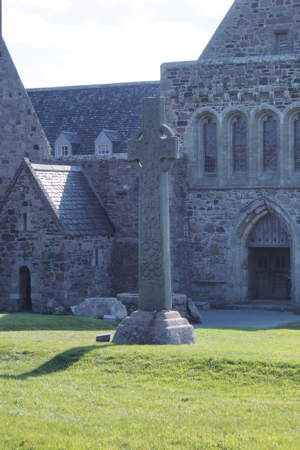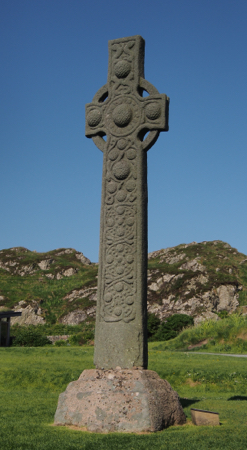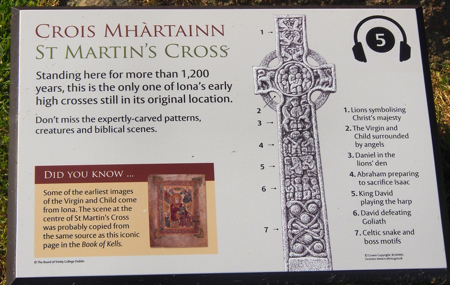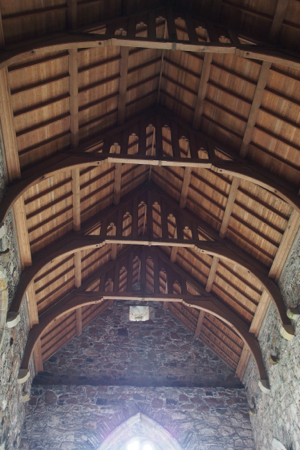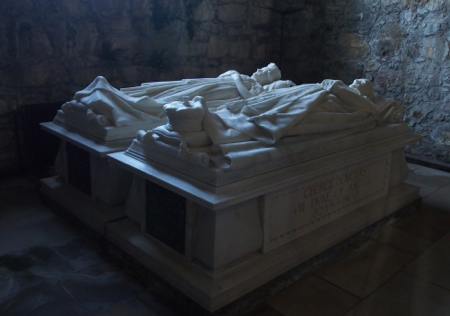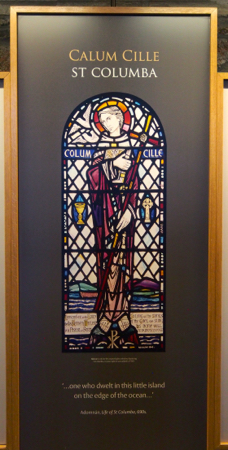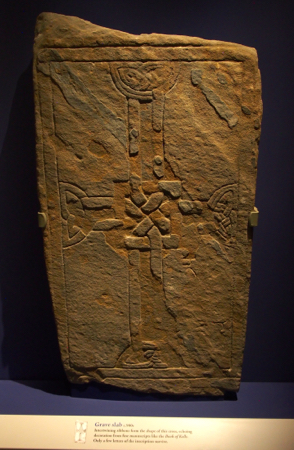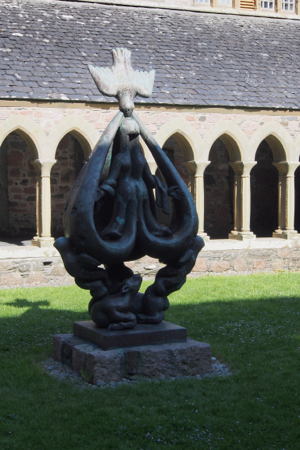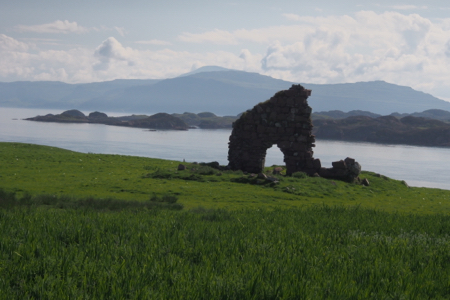Sat., 5/28/16 – Barra, Outer Hebrides, Scotland
Today we docked at Castlebay Ferry Terminal at Barra at the south end of the Hebrides. The island is so small they had to ferry two “school buses” over from South Uist to drive us around. The roads are all one lane with “passing places” every couple hundred yards. The island relies on fishing for existence but most people have several town jobs and own a croft to raise cattle, sheep, or chickens or grow something in order to make ends meet.
Lobster pots
Passing Place
Narrow roads
Vatersay
Our bus tour ended out at the Barra Airport, which is the only one in the world with a runway on a sandy beach. Planes can only come and go at low tide and someone must be sure it is clear of geese and driftwood. Only very small planes can land - 19 seats, but only 17 passengers is the largest.
Barra Airport Control Tower
Baggage claim
Parked off the "runway"
Landing on the sand (a sign)
"Runway"
Safe to land marker - it must be totally out of the water
After lunch on the ship we walked into town at Castlebay. We went to the Community Center where volunteers showed us what a Scottish Caille or “social event” was like. They showed us some Scottish folk dances, a girl danced a highland fling, a man sang two ballads, and two people played accordion. Singing and dancing substitute for movies and TV. We looked in at the Catholic Church. It is a simple structure. 95% of the population of Barra is Catholic while most of the rest of Scotland is Church of Scotland (Presbyterian). We went into the local grocery/gift/homemade crafts store. Fresh fruits and vegetables are a rarity. Packages of dehydrated beans, mushrooms, and soups filled the little shelves. We visited the Toffee Shop and sampled their candy. It tasted like a lump of brown sugar. We did not take a water taxi/ferry to visit the Kisimul Castle in the bay. It is the number one tourist attraction and most photographed part of the island.
Barra harbor
Local entertainment
Street scene
Post Office
Our Lady Star of the Sea Roman Catholic Church
Our Lady Star of the Sea Roman Catholic Church
Our Lady Star of the Sea Roman Catholic Church
Kisimul Castle
We came back on board to rest and then went to the Inner Circle party. Anyone who takes a third GCT tour becomes a member of the Inner Circle. We had Champaign and hors d’ oeuvres the chef concocted from local ingredients and toasted with Rusty Nails (very Scots).
After the captain gave us instructions on how to use the zodiacs and special life jackets we will need tomorrow and a briefing about Iona, we had another fine dinner.Sun., 5/29/16 – Iona, Scotland
Today was another gorgeous day and my favorite port of call so far. Iona is a small (3 miles long and one mile wide) island in the Inner Hebrides. There are only 150 permanent residents. Our ship anchored in the strait between Iona and the Isle of Mull around midnight last night and this morning we tendered into the Iona beach/ferry dock in zodiacs.
We met our local guide, Zoë who lives on one of the 6 crofts on the island, teaches music at the primary school two days a week, tutors, and is a local guide.
Island of Iona
MV Corinthian at anchor for our Zodiac landing
Beautiful harbor
We walked to the nunnery to take a close look at the ruin. It was closed in 1560 due to the Reformation.
Iona Nunnery
Iona Nunnery
Iona Nunnery
Nunnery gardens - The two restaurants on the island raise greens and vegetables in the nunnery gardens to serve at meals.
In 563 St. Columba and 12 followers arrived on Iona and founded a monastery. St. Columba’s followers founded new monasteries mostly in Ireland and converted the Pagans to Christianity. Pilgrimages to Iona increased in the 7th and 8th c. and kings and chiefs wanted to be buried near St. Columba. The Book of Kells, a masterpiece of Dark Age European art that includes the four Gospels, was made by monks on Iona. In 794 CE, Vikings descended on Iona and within 50 years Iona was no longer a religious special place.
Our guide took us through the ruins of the Benedictine abbey built in 1203. Several Celtic "high crosses" (St. Martin's, St. John's and Maclean's) stand outside. They were carved from one piece of stone and have a ring around the intersection of the cross. Many kings, chiefs, warriors, and religious are buried in the Abby, the cemetery, and the “walk of the dead.” St. Columba is thought to have been buried in a small chapel outside of the Abby. The Duke and Duchess of Argyle are entombed in the Abby. The Duke has his crown at his feet meaning he is buried elsewhere. The altar of the Abby is made of Iona marble that has flecks of green in the white stone. We walked into the cloisters with a friendship statue in the center lawn. We stepped inside the museum displaying grave slabs and crosses. The building was originally a Benedictine medieval infirmary.
Iona Abbey
Maclean's Cross
St. John's Cross
St. Martin's Cross
Benedictine Church
Statues of the Duke and Duchess of Argyll
Grave slab c. 900s
Friendship sculpture in the abbey cloisters
Ruins of the Bishop’s house
| Return to Top | Return to Itinerary | Return to Trips page to view other trips | Return to Dreamcatcher Home Page |
